The HSJ/Roche pathology conference on integrating the latest advances into the patient care pathway discussed the key issues facing the health service. Alison Moore reports
Pathology may be the science behind the cure but it is also at the forefront of changes in the NHS, encapsulating many of the challenges the rest of the health service faces now and in the future. Key among these is how the latest scientific advances can be incorporated into everyday practice.
‘There is a reluctance to change. “Not invented here” is an issue within the NHS and not just within pathology’
HSJ editor Alastair McLellan − opening the HSJ/Roche pathology conference on integrating the latest advances into the patient care pathway − said: “Pathology has gone through an awful lot of change and an awful lot of delayed change.”
The speakers at the conference showed how that change was playing out in practice and the extent of the challenges still to come.
Doris-Ann Williams, chief executive of the British In Vitro Diagnostics Association (BIVDA), said one of the biggest issues for industry was how to get products into use in the NHS: there was a feeling that products “always get to the top of the hill but not over the brow”.
However, there were some helpful signs. A government committee, including ministerial representation, was looking at adoption issues, while NICE had some initiatives that looked at whether products did what the manufacturers said.
And NHS England’s specialist commissioning side had a commissioning for evaluation programme that could operate almost like a pilot scheme for the adoption of new technology, allowing it to be introduced in some areas and then evaluated.
Limited adoption
However, Ms Williams said there was often no guarantee that once a technology or test had been through evaluation processes it would be taken up across the country. There was limited diffusion, with a range of factors holding back adoption.
“There is a reluctance to change. ‘Not invented here’ is an issue within the NHS and not just within pathology,” she said. “I heard a great saying recently - new ideas are like toothbrushes, everyone needs one but nobody wants to share someone else’s.”
‘How do we get people to see beyond the day job to take up these opportunities?’
Other issues were silo budgeting and perverse incentives, together with difficulties in moving money around the system. The diagnostics industry also needed to ensure it had the evidence to hand to make the case for adoption, and that could be harder for diagnostic tests than it was for pharmaceutical products.
The industry, which benefited from close working with clinicians, saw itself as a partner with healthcare providers. The Innovation, Health and Wealth programme, promoted by the government, has highlighted how organisations can partner with the NHS, and BIVDA now has a member of staff seconded to work with NHS England for three days a week. The problem of adoption was recognised by Sir David Nicholson and Sir Ian Carruthers but there was a need to get down to the grass roots.
“It is how do we get people to see beyond the day job to take up these opportunities?” Ms Williams said.
There was a concern that the procurement review could derail some of this progress. “One side of government is looking just at costs and how do we get those costs driven right down. How much lower can they go and will we still be recognised as a serious market in the UK?” asked Ms Williams. And she warned that some companies might decide not to introduce a new technology or product in the UK.
Personalised care
Personalised healthcare was a huge opportunity and many targeted (or diagnostic dependent) drugs had “companion tests”, which would identify patients who would benefit.
But looming issues included the treatment of managed service contracts for VAT purposes. Currently NHS organisations can reclaim VAT on these but VAT recovery schemes are being examined by HM Revenue and Customs. A review of these is likely to report in the next few months and could affect them.
‘We are trying to deliver the right test, at the right time, in the right place, in the most cost effective way’
There were also new EU regulations that the industry would have to contend with.
“We don’t know when they will come into force. The best guess is from spring 2017 to the end of 2019 and into 2020. All trusts will have to comply with new regulations. Once they come into force the industry has three years to get everything in the market up to the level it needs to be. There is going to be a lot of requirement for extra spend. We would like to see a five year transition phase,” said Ms Williams.
But she stressed the overall picture was not unduly negative. While there were challenges, the importance of pathology was being recognised by many people and diagnostics had the potential to improve health outcomes in both primary and secondary care.
Inside story
The past few years have been marked by moves to centralise pathology services in some parts of the country − not always successfully. But it is rare to get the inside story of what goes wrong when these grand plans collapse. John Wicks, interim chief officer of Herefordshire Clinical Commissioning Group, offered the conference a fascinating insight into some of the difficulties of procurement.
Herefordshire, a rural county of 180,000 people with just one acute trust, was one of four areas put together to form the South West Midlands GP pathology procurement. This was started in the days of PCTs and was facilitated by the special projects team of the strategic health authority.
This team had been at the leading edge of opening up the NHS to new providers or new models - including the franchising of Hinchingbrooke Hospital and the East of England pathology procurement.
The South West Midlands GP pathology procurement was intended to deliver a number of benefits including lower costs - £800,000 annual savings in Herefordshire - and reduced duplication with the potential to drive a more integrated service delivery. Ultimately, it could benefit clinical networks and contribute to more sophisticated models of care.
‘It is not just about technology, it is about new models and ways of looking at things’
Herefordshire was part of a consortium including Worcestershire - next door and with strong links to the county - but also Warwickshire and Coventry and Rugby, which are a long way away and quite different health economies.
But as CCGs replaced primary care trusts, the emphasis on the role and involvement of clinicians fundamentally changed the situation. The CCG was presented with a process that was a long way down the line with bids being developed.
Worcestershire decided it did not want to work with Herefordshire, leaving the Herefordshire trust − Wye Valley − in a consortium with trusts from the other side of the proposed patch.
“It ultimately just started to sound alarm bells,” said Mr Wicks. “There were seeds of doubt around the governing body table. The process seemed to be driving a competitive wedge between organisations whose futures depended on collaboration.”
The CCG liked the potential upside - such as the promise of electronic access to tests carried out in different settings, the tempting savings and the clear requirements on turnaround times. However, these benefits were not equally spread.
No ‘inherent obedience’
There were real and perceived downsides. “There had been very little direct personal engagement with the process,” said Mr Wicks. GPs did not have a culture of “inherent obedience” and saw the process as designed from the top downwards. There was also the example of the problems encountered with NHS 111 in the Midlands − a “debacle which took the gloss off” plans for pathology.
“The idea that regional procurement provided good economies of scale and best value for money had been debunked,” Mr Wicks said.
Nor were GPs willing to take on the view that this form of disruptive innovation would be useful.
“The predominant view around the table was that it felt like playing Russian roulette,” said Mr Wicks. Wye Valley Trust had a recurring deficit of £10m and was unstable. “This felt like pulling struts from under them and sacrificing the whole health economy on the back of a few hundred thousand pounds.”
‘We are having to deal with a turf war between NHS England and the Department of Health over who is responsible for what’
There were also concerns about the impact of changes in pathology on related services such as phlebotomy. “It was just going against the grain of local clinical opinion,” he said.
So the CCG decided to pull the plug on the procurement. “Our experience came to a thundering halt because competition collided with collaboration… We abandoned the experiment,” Mr Wicks said.
He also outlined some potential risks associated with not going ahead, such as reputational damage and the risk that the NHS was seen not to be able to deliver transformational change through commissioning. Potential bidders might be more risk averse when considering bidding for other NHS contracts.
Diagnosis precision
Mark Baker, director of the Centre for Clinical Practice at NICE, addressed how pathology services can become more responsive to patient and clinical need. There has been enormous growth in the number of diagnostic tests with drivers including being at the “sharp end” of services, the increasing precision of diagnosis in areas such as cancer, and the growing volume of NICE guidance.
‘We need to empower these generalists to behave as if they were specialists − we can support, invest in and empower primary medical practice to become the new experts in multi-morbidity management’
“But the biggest shift of all is that most people who present for healthcare don’t have single system disease, they have multisystem disease,” he said. Most guidance, however, did not deal with the challenges of comorbidities. And while people were living longer, this was a prolongation of life with ill health; the period of life when they were well had not substantially changed.
Three quarters of emergency admission involved multiple morbidities; 40 per cent had a mental health component. But 20 per cent of those with multiple morbidities were under 50. All of this had a potential impact on pathology.
The demands and complexity of this were likely to fall first on primary care. “If we don’t fix primary care, meddling with hospitals won’t help,” Professor Baker warned.
Anticipatory management
In an ideal world, the role of primary care would be “anticipatory management”. But primary care’s involvement might also provoke a re-examination of the mantra that specialism is always good.
“We need to empower these generalists to behave as if they were specialists,” he said. “We can support, invest in and empower primary medical practice to become the new experts in multi morbidity management.”
Primary care pathology would need to be accurate; offer advice and support, not just “doing tests”; responsive in terms of turnaround; and action oriented.
But this picture raises fundamental questions about tests, he warned. The more tests done, the more abnormalities found - but were they significant and would they change the patient’s outcome?
‘Change is always a challenge. There can be a reluctance to accept that there are better ways of doing things’
In terms of services, there were lessons from what has happened in cancer. It had been recognised that increased specialism among healthcare professionals gave better results - something likely to be mirrored in pathology. Teams working together made better decisions than individuals - although it also increased time spent in meetings.
Cancer services had also seen an increase in both external and internal quality assurance. And an increase in the number of samples per patient meant that productivity - measured as patients per professional - could appear to fall.
In terms of looming changes, Professor Baker outlined how NHS England had asked NICE to produce service guidance in six areas − urgent and emergency care; out of hours care; seven day services; care for emergency medical admissions in the first 48 hours; readmissions; and consultant review within 12 hours of admission. These would all have ramifications for pathology services.
Centralising pathology services across multiple trusts − and bringing in an independent sector partner − is always a challenge. But in Somerset it has been achieved quickly, with consultant buy-in and leadership.
Reluctance to change
David James, clinical director of Southwest Pathology Services, the joint venture formed by the partners, said: “Change is always a challenge. There can be a reluctance to accept that there are better ways of doing things.”
Somerset takes three hours to cross and might not seem the ideal place to establish a central hub for pathology. But last year Yeovil District Hospital Foundation Trust and Taunton and Somerset Foundation Trust formed a joint venture with Integrated Pathology Partnerships − itself made up of Sodexo and LabCo − to develop services.
Just over six months ago a central hub for cold work was set up, which now does blood sciences, cervical cytology and microbiology, and has been inspected by external regulators.
“The building is just a facilitator. What is behind it is how we deliver the science,” said Dr James. This has included some blurring of the “ologies” to being in joint processes and changes in skill mix.
There had been challenges, he said, and they had responded by ensuring senior staff were always available to deal with problems, regular meetings and the involvement of trusts, CCGs and the local medical committee.
Important changes had included a real time dashboard to allow clinics and A&E to check the progress of samples. There had been tremendous cultural change, with daily KPIs, but also training and support to help staff as their roles changed.
Point of care had been introduced in local community hospitals to see if this could reduce costly transfers to DGHs. Often renal profiles and haemoglobin were the tests required. “We are trying to deliver the right test, at the right time, in the right place, in the most cost effective way,” he said.
But these changes could not overcome every problem. For example, it was still difficult to introduce new tests when the benefits were realised in a different area to the costs.
‘One thing which we have learned from making savings is that you have to look at the whole system’
Mark Busby, divisional manager at Imperial College Healthcare Trust, spoke of some of the barriers that had to be overcome when delivering cost improvements in a large pathology department.
His department not only provides pathology services for its own trust but also for Chelsea and Westminster FT, some services for West Middlesex and community-based pathology for five CCGs.
Initially, cost savings had been achieved by focusing on “leanness” and service improvements. But more recently they had to look at a wider approach. “One thing which we have learned from making savings is that you have to look at the whole system,” he said.
So, for example, Imperial had found that some changes had initially resulted in increases in transport costs that were greater than the money saved.
Pathology services also had to think where a partnership approach was appropriate with their customers. There could, for example, be sharing of risks. Good communication with customers was vital, along with agreement on changes such as adding in new tests and pricing for them.
With CCGs, there was the question of whom the department should be talking to. Was it their IT leads, vocal GPs or CCG chairs? Sometimes it was necessary to get them all together.
Patients first
In the longer term, Mr Busby wanted to look beyond Imperial into potential joint ventures. “We are beginning to move into the philosophy of putting patients first,” he said. Work also included developing technology and improving access to results through a “pathology cloud”.
And it was important to understand how quality in pathology went beyond just getting accredited to feed into other priorities such as the 18 week pathway and pressure in A&Es.
Changes needed the involvement and commitment of staff and a partnership approach. Staff needed to understand what the problem was rather than being told what the solution was.
Bowel cancer is a major killer in the UK, with 40,000 people diagnosed with it each year and 45 per cent of them will die within five years.
Deborah Alsina, chief executive of charity Bowel Cancer UK, said none of the nations of the UK had managed to achieve the target of 60 per cent of eligible patients being screened, with uptake as low as 32 per cent in some areas. Yet five-year survival was 93 per cent if the cancer was caught at the earliest stage against 7 per cent for the most advanced stage.
The current test involves examination of three samples and gives a number of false positives and false negatives. But a new test could be introduced as soon as 2015 that is more sensitive and detects lower levels of blood in faecal matter. There were also some pilots of bowel scope screening.
Increasing endoscopies
These changes in screening had significant implications for endoscopy and pathology. The increase in the number of endoscopies required was being driven by screening, symptomatic referral and a shift away from using barium enemas.
But levels in England were still lower than in many other countries and there was considerable variation between regions in ease of access. In Wales, 45 per cent of patients had to wait more than eight weeks for an endoscope.
But the need for colonoscopies and flexible sigmoidoscopies was about to increase significantly. In 2011-12 there were 504,000 colonoscopies and 323,000 sigmoidoscopies performed in England: predictions for 2016-17 were 739,000 and 743,000 respectively.
“This means sustained massive investment in our endoscopy services. It will have a huge impact on our pathology services as well,” Ms Alsina said.
Personalised medicines could also require additional tests: the KRAS biomarker test could determine which patients should be given Erbitux, for example. “There are lives there to be saved. Screening and access to diagnostic services are key to increasing early diagnosis,” Ms Alsina concluded.
The need for a consistent approach to adopting new technologies was the theme of Christopher Parker’s speech.
Mr Parker, managing director of Roche Diagnostics UK and Ireland, pointed out the key role of diagnostic tests, which influence 70 per cent of clinical decisions and can increasingly identify the patients who will benefit from drug therapy.
“We have more than 200 personalised health programmes ongoing in Roche and 60 per cent of these new therapies are being developed with companion diagnostics,” he said. But adoption of new tests could be slow and uneven between different areas.
For example, there were 60,000 new cases of heart failure a year, with 900,000 people affected - including 5 per cent of over 75s. NICE guidance said that measurement of serum natriuretic peptides should be used as a firstline diagnostic test and had the potential for £3.8m of savings a year, as it avoided echocardiograms.
Negligible take-up rates
Roche had worked with the East Sussex health sector to introduce this and had avoided 691 echocardiogram referrals in a 12 month period. This represented potential savings of £153,000 to £277,000 (22 to 39 per cent of the QIPP savings asked of cardiology in the areas). But take-up rates of the test in a neighbouring area were negligible.
Adoption of innovative technologies could drive cost savings, he said, as well as leading to more accurate diagnosis and improved outcomes for patients. It was important to keep patients informed throughout the patient pathway.
But who would lead the way in this? Procurement and finance were playing a more important role in some areas and could sometimes feel like the main driver. Then there were healthcare professionals. But key people in NHS England did seem aware of many of the issues around this, such as the longer time needed for returns on investment, and industry could play a part in facilitating conversations between the different groups.
‘It is not just about technology, it is about new models and ways of looking at things, and being challenged and taking those challenges on’
As a partner in this, industry could offer consultancy and support around pathway reconfiguration and the importance of seeing the big picture and looking beyond silo budgets; by using managed services to bring together different stakeholders; education on new diagnostic technologies and the patient benefits; and encouraging finance and procurement to assess and adopt new models of financing.
Monitoring of the use and benefits of newly adopted technologies could also help to understand the impact on the health system, and the benefits of adoption across the care pathway, defining where the test sat within the pathway and how and where it added value. In some cases, risk sharing might be appropriate - as could paying for outcomes.
“It is not just about technology, it is about new models and ways of looking at things, and being challenged and taking those challenges on,” he said. It was important to take a sustainable approach which offered both best patient care and best value for the NHS.
Archie Prentice, president of the Royal College of Pathologists, outlined how the RCPath had been involved in advising on the Carter reviews. Hub and spoke models seemed the best way to deal with some of the issues.
“We are not in any way opposed to competition. I think it was unfortunate that this end to end message was not clearly understood. There are parts of this process which are not quite working,” he said.
Reinvesting savings
Carter had spoken of the need to reinvest savings from changes in pathology and this was something which had not happened. Decisions needed to be based on value rather than what tests cost; a focus on costs could lead to disengagement.
“Progress and response in service development in pathology have stalled. We are having to deal with a turf war between NHS England and the Department of Health over who is responsible for what.” He also expressed concerns about the downgrading of biomedical scientists - “a toxic shift in skill mix” - who would be the people who implemented new tests.
At the same time, the specialism was facing a genomic revolution that might require a new kind of molecular biologist - a role which did not fit easily into existing disciplines.
The RCPath and other bodies were beginning to meet regularly to display a united front and “speak truth to power”. It was also talking to NHS England about service and financial models, and what the pathway patient should look like.
But Dr Prentice acknowledged services in some areas would move: small trusts could not expect to mimic the power and diversity of larger ones. And he pointed to NHS England medical director Sir Bruce Keogh’s enthusiasm for “24 hour a day, 7 days a week” working. “He does not understand the impact that will have on service provision.” He warned that the introduction of this would not be easy.
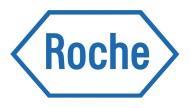
Testing times for pathology − an HSJ supplement

Integrating the latest advances into the patient care pathway
 Currently
reading
Currently
reading
Testing times for pathology − an HSJ supplement
- 2






















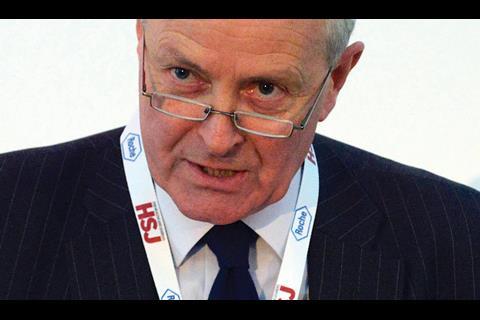
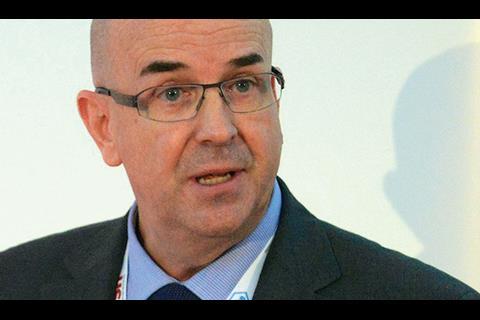
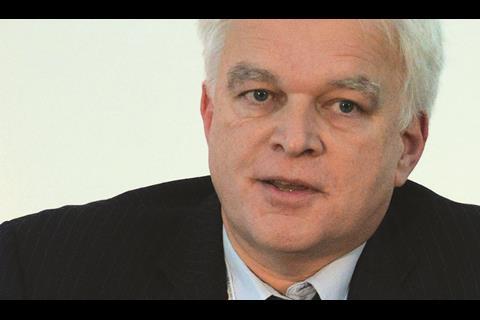
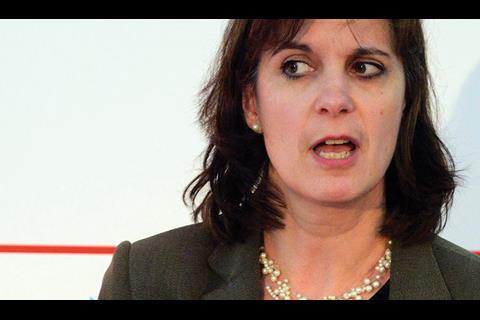
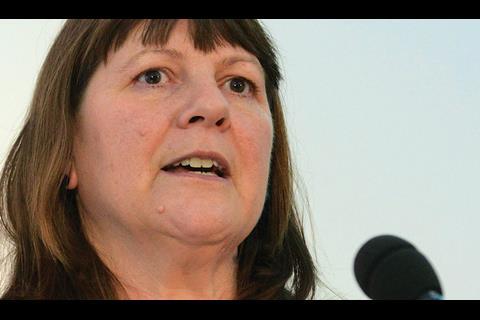
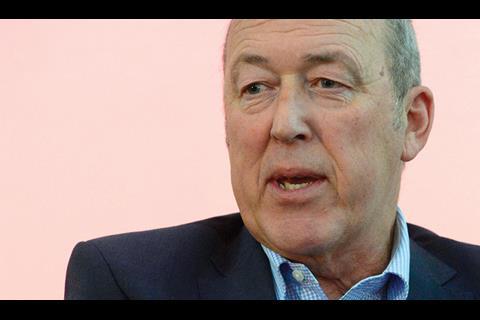

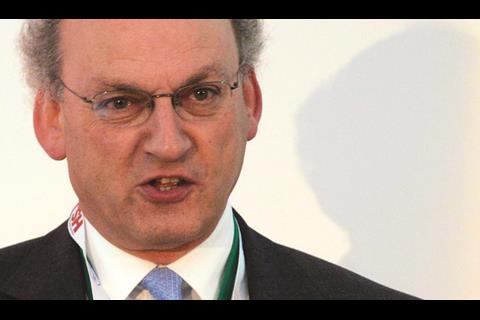
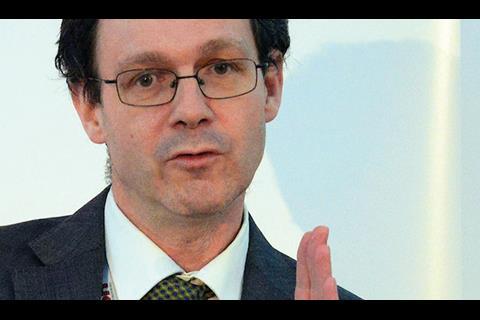

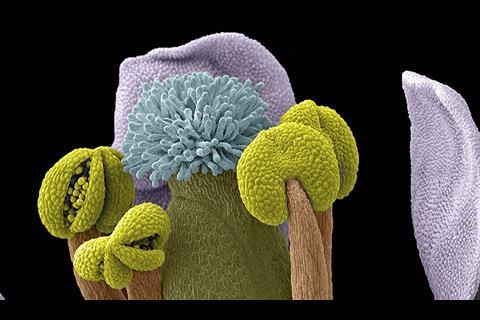
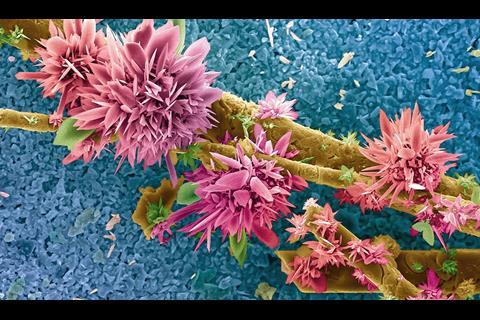

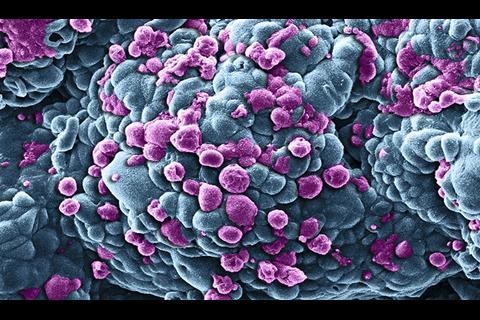


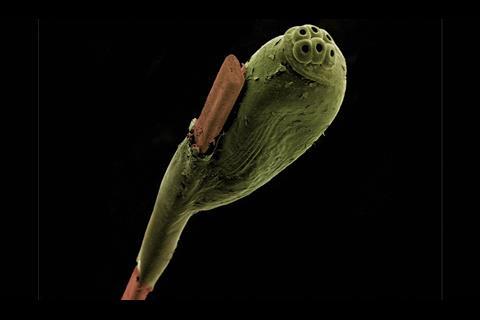
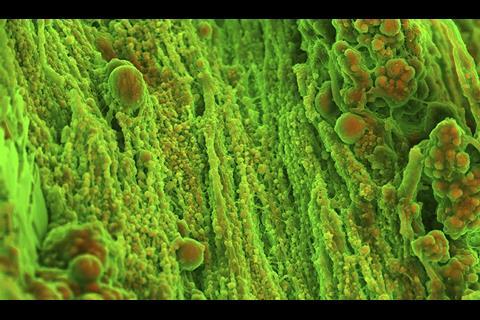


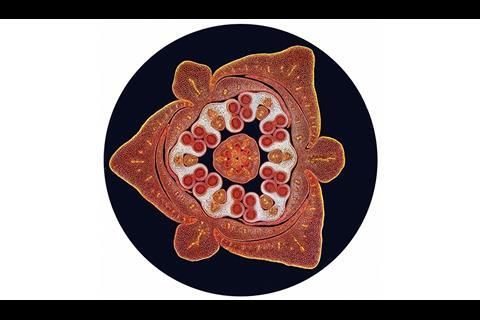
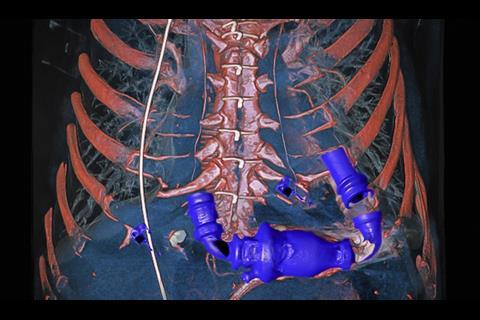


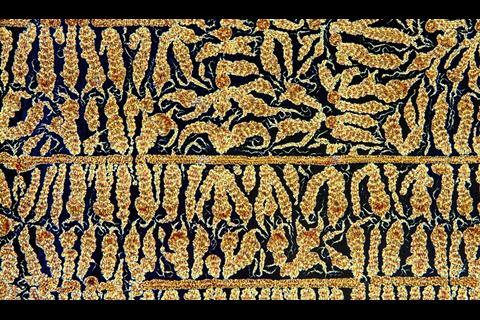









No comments yet